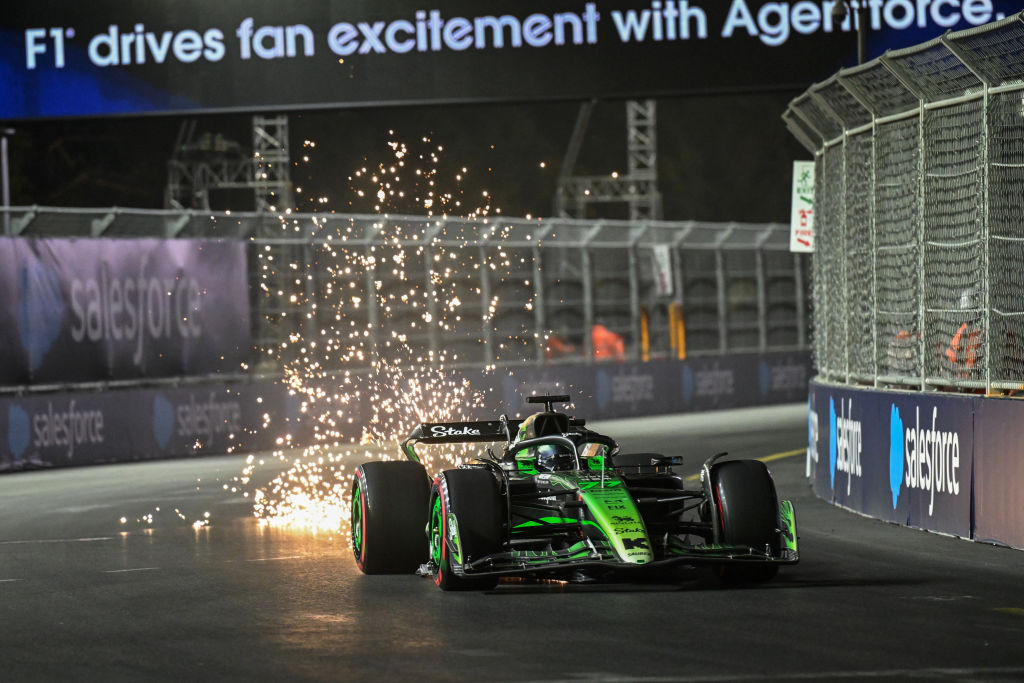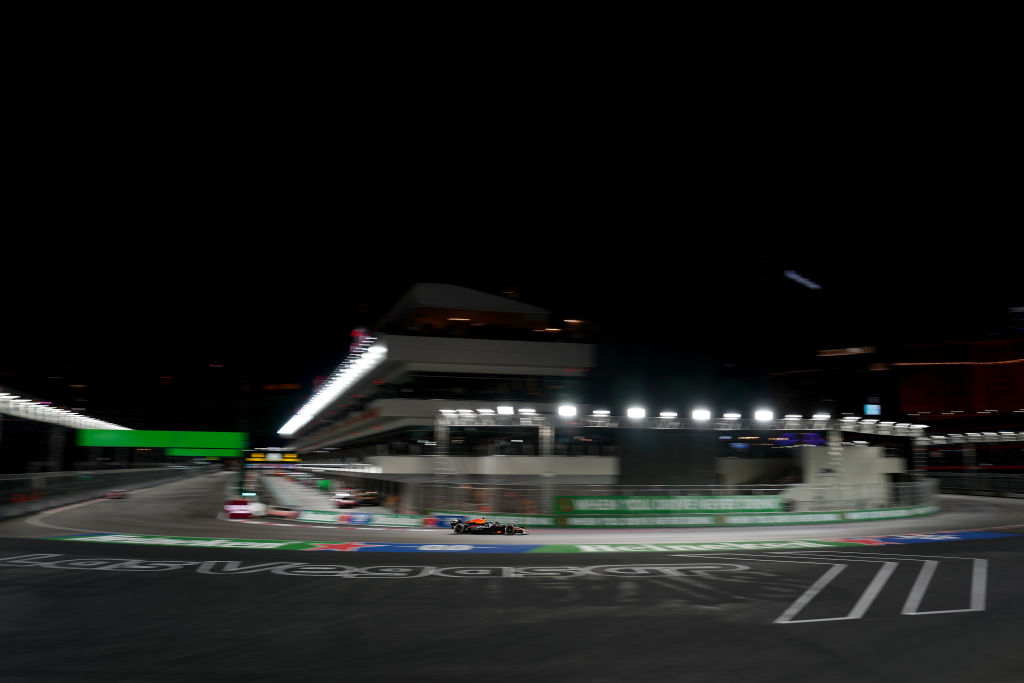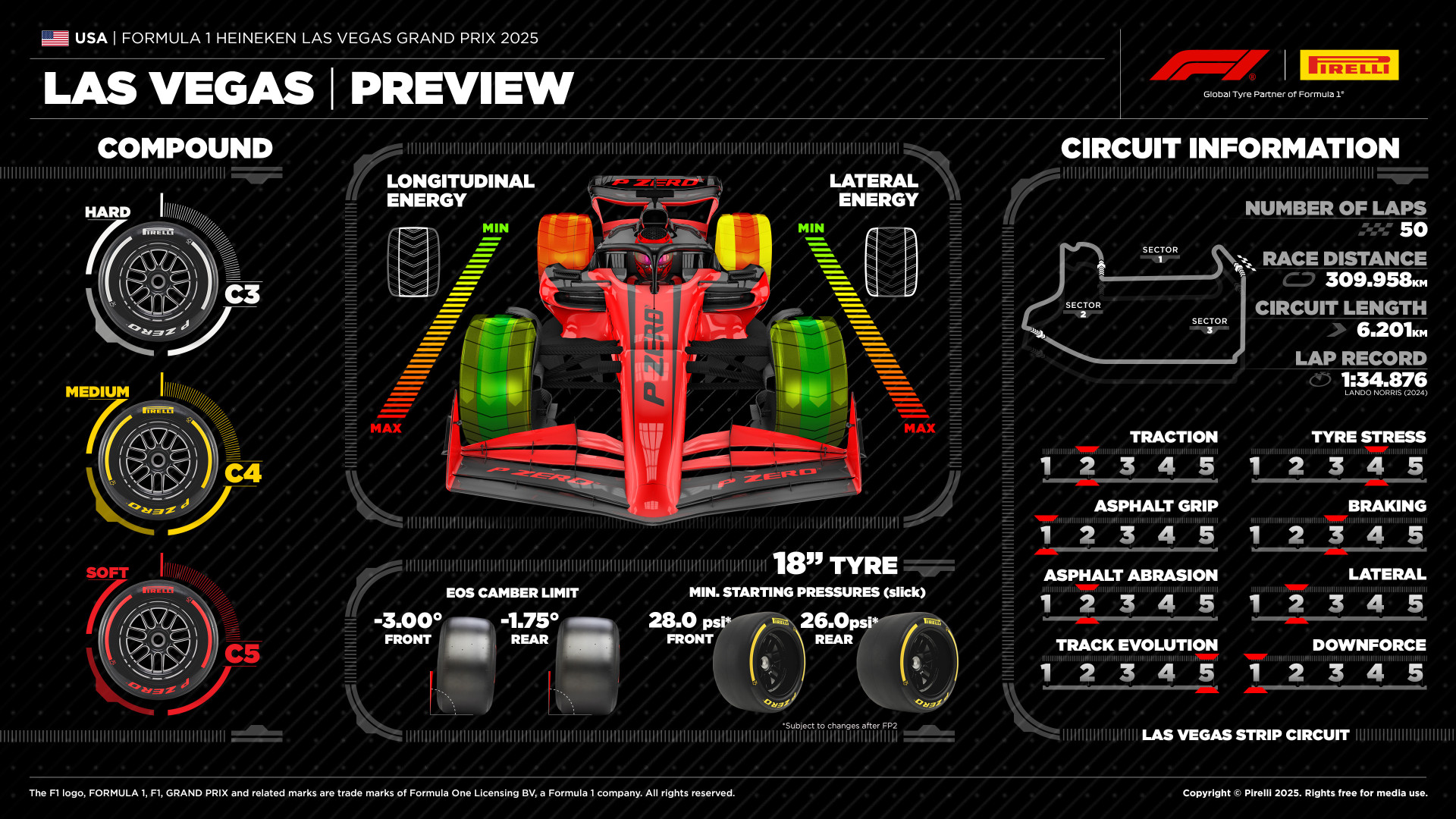The third version of the Las Vegas Grand Prix is about to as soon as once more be the coldest race of the Formulation 1 season, with an evening race in November that includes temperatures within the low 50s. That gives a singular problem for all the groups, so who higher to speak us by means of the idiosyncrasies than the trackside engineering director of the crew that scored a one-two right here final 12 months: Mercedes’ Andrew Shovlin.
“Las Vegas is tough. This can be a monitor the place you carry the low-downforce Monza package deal and also you run roughly that. And really, we’re at fairly excessive altitude right here [2,000 feet -Ed.], so that you lose much more downforce by advantage of the truth that you’ve got bought skinny air.
“It is very tough for the drivers to regulate the automobile with the low downforce. However with the size of the straights, there is no choice to run an enormous wing since you’d be shedding a lot within the straight line. You’d by no means ever make it again.
“It is a difficult avenue monitor. It is very, very quick. The partitions are very near you. You have to use all of the circuit that is accessible. Errors get punished. However the drivers simply do the standard factor of build up because the grip’s bettering.
“Past simply the downforce degree right here, in the event you’ve bought tire temperature, you’ve got bought grip. That is the important thing factor. It isn’t like a standard circuit the place you actually really feel the variations within the wing degree. The overriding factor right here is are you able to get the tires within the window? And in case you have and another person hasn’t, you may find yourself being a second faster.

Low-speed corners require operating the automobile low to match. Sam Bagnall/Getty Pictures
“We have got some decisions accessible to us on wing ranges. Our strategy has been to not create pointless variations to 2024, in order that’s outlined the place we’ll begin with the automobile.
“You have to consider that the monitor might be low grip to start out, so you must reposition the automobile to get extra stability in it in comparison with the place you’d anticipate to be in come qualifying. And there is a number of choices accessible.
“However as soon as we see what issues we’re coping with – are we getting the tires sizzling sufficient? Are they too sizzling? Is it an oversteer stability, an understeer stability? Are we graining the tires? As soon as we all know the solutions to these, then we will take a look at the precise options to these issues.
“You have to run the automobile low due to the low-speed corners. Due to this fact, on the apex, you need the automobile to be as near the bottom as potential. So then on the straights, you may be hitting into the street. However for a avenue circuit, it is really fairly easy. There are some notable bumps however total, it’s fairly easy and you may get the automobile fairly low.

Whereas a avenue circuit, the floor is comparatively easy, though there are nonetheless loads of tire-wearing components in play. Alex Bierens de Haan/Getty Pictures
“You have bought some actually huge stops like Flip 14 – it is concerning the largest hit on the brakes you’ve got bought on all the calendar. However truthfully, with this lap, an important factor is how you bought the temperature opening the lap.
“It is fairly a busy opening sequence. And if you have not bought the grip there, you are both locking fronts or sliding. So the primary factor is, are you able to construct that temperature within the out lap? And it is a type of circuits the place if the lap begins effectively, it usually finishes effectively, as a result of in a standard qualifying lap, you are really attempting to maintain the tires cool. If the motive force has a snap, that places in temperature, which can then punish him with much less grip. That is really one of many only a few circuits [where] you need not fear about that. So the drivers can let the automobile slide round a bit – it would not value them in the best way that it could at virtually each different circuit.
“You have to take a look at the tire temperature in numerous methods. You have bought the majority, which you must construct that temperature to get the rubber gentle, so it is going to generate grip. And that is one of many belongings you’re doing on the out lap.
“However then way more transient than that’s what the floor is doing. And as quickly as you hit the brakes, you begin constructing floor temperature since you’ve bought sliding. As you go into the apex, as you get on the facility, increasingly more of that floor temperature is constructed. And that is the factor that basically drops on the straights.
“So one of many challenges right here is definitely when the drivers hit the brakes, the tires are too chilly to generate good grip. And that preliminary hit, you possibly can find yourself with, the grip’s a bit low, it is simpler to lock the fronts; they will not get that good kind of feeling of the rear of the automobile’s planted.
“However you have to belief that as you go into the braking section, that temperature will come up and the tire will begin to grip. That is one of many issues they’re simply kind of getting used to in free observe is how that grip comes.
“You see a unique efficiency order right here very often. It’s tough to liken it to any others as a result of the one time we expertise these temperatures of winter testing in Barcelona, and that is a really totally different circuit as effectively.
“Should you took the ambient temperature and the monitor temperature out of the equation, then it would not be so totally different to Baku or maybe Montreal. Nonetheless, that places the tires in a area the place we don’t ever race on every other monitor on the calendar.
“That’s the factor that makes it so uncommon, aside from the actual fact it is fairly a peculiar place. While you noticed the place they had been attempting to host a race, you thought it was virtually unimaginable to construct a circuit right here that made sense. However really it is a enjoyable monitor – it provides up good racing and hopefully it will do the identical on Saturday night time.”
AT A GLANCE:
Race distance: 50 laps/192.6 miles
2024 pole time: 1m32.312s (George Russell, Mercedes)
2024 winner: George Russell, Mercedes

Earlier than every Grand Prix, Pirelli offers the groups with race technique eventualities which are in idea the quickest, primarily based on the actual tire compounds accessible that weekend. That is outlined by in depth calculations bearing in mind quite a few tire-related elements.
This strategy requires a unique methodology to that utilized by the groups, even when the targets are comparable. All the information is processed by proprietary software program designed to establish the optimum methods for one automobile on monitor, with the goal of finishing the race within the shortest time potential.
The primary data to be analysed considerations the efficiency distinction between the compounds, as recognized in pre-event evaluation carried out by the modelling and simulation group. Then, added to that is historic information regarding tire degradation from earlier years on the similar monitor, together with information from the identical compounds already used at earlier races through the present season.
A key parameter within the calculations is efficiency life, which is the utmost variety of laps a tire can cowl earlier than its efficiency drops to a degree the place it’s preferable to switch it. These components, together with different elements, make it potential to estimate lap occasions for every compound and, by additionally bearing in mind variations in gasoline masses, to establish the best home windows for tire modifications.
A key issue, which the groups take into account of nice significance when deciding on a one- or two-stop technique, is the time taken for the automobile to return down the pit lane, perform the tire change and rejoin the monitor, which varies from circuit to circuit. Analyses are up to date all through the race weekend, to incorporate information from monitor classes and what the Pirelli engineers have discovered from the product.
The groups, having extra information regarding their very own automobiles, typically use what’s often called the Monte Carlo methodology. This additionally takes into consideration random variables similar to site visitors, the probability of the security automobile being deployed and the way easy it’s to overhaul at every monitor, particularly within the DRS zones.
HEINEKEN LAS VEGAS GRAND PRIX WEEKEND SCHEDULE (all occasions ET):
Thursday, November 20
7:25pm – 8:30pm – Free Observe 1, ESPNEWS
10:55pm – 12:00am – Free Observe 2, ESPN2
Friday, November 21
7:25pm – 8:30pm – Free Observe 3, ESPNEWS
10:55pm – 12:00am – Qualifying, ESPN2
Saturday, November 22
10:55pm – 1:00am – Las Vegas Grand Prix (50 laps or 120 minutes), ESPN





